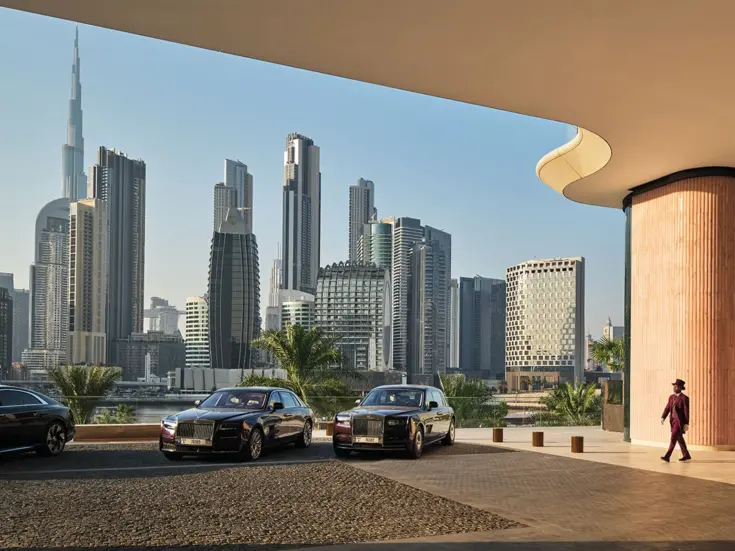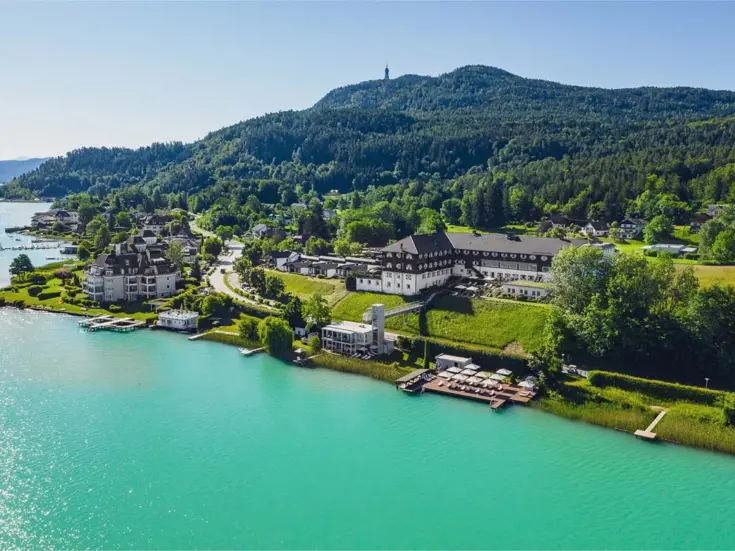Venice’s iconic gondolas may soon be sunk as the city is in turmoil over the shrinking numbers of those equipped to build them. Teresa Levonian Cole investigates
Over breakfast on the waterfront terrace of the Gritti Palace, I watch Venice come to life as the rising sun bathes the dome of Santa Maria della Salute in rosy glow. At this hour, water-traffic is strictly functional: traghetti ferry workers across the Grand Canal, brimming vaporetti carry commuters to their offices, teak water-taxis deposit the nattily suited at palazzo steps, while floating juggernauts lumber past bearing post, provisions and building materials for the Sisyphean task of propping and restoring the city’s sinking stones.
At this hour, church bells ring, seagulls caw and the strangled strains of O Sole Mio are nowhere to be heard. With their clients still abed, gondolas — romantic, mysterious, lugubrious, faintly sinister — bob at their moorings, yet to join the fray.
The first written reference to the gondola appears in the city annals of 1094. Flat-bottomed to navigate the shallows of the lagoon, and painted an obligatory black since a decree of 1562, the gondola has been modified over the years to acquire its graceful shape and characteristic technique of propulsion.
By the height of the Venetian Republic in the 16th century, some 14,000 gondolas plied the canals, to the delight and inspiration of successive generations of artists, writers and musicians. Among these was Gabriel Faur’, who used to glide along the Grand Canal playing a four-octave portable piano, commissioned for him by the sewing-machine heiress and arts patron Winnaretta Singer — the Princesse Edmond de Polignac. Her Palazzo Contarini was one of the last noble houses to maintain that former status symbol, the private gondola.
A gondolier arrives at the pier of Santa Maria del Giglio, steps aboard his craft and begins the daily ritual of polishing. Once, the trimmings would have been brass; these days, they are likely to be of more practical steel. Practicality, in the form of mechanisation, has seen the decline of gondolas, which now number a mere 400-500 — each one the property of the gondolier for whom the craft was made. They are an independent-minded bunch, these gondoliers, operating in small groups from a specific stazio — the only place they may pick up clients — working in strict rotation, with predetermined itineraries and (supposedly) fixed fees.
Officially, just 425 gondolier licences are granted — jealously guarded in what is arguably one of the most nepotistic professions in existence — to be passed on or sold to the next generation. Kept comfortably afloat by tourist demand, this powerful guild is enjoying a renaissance, with young hopefuls flocking to the official school for gondoliers, founded in 2007 to help regulate standards and address shady practices — with varying degrees of success.
While international organisations rally to protect Venice’s buildings and watery environment, and gondoliers enjoy the support of the municipality, safeguarding the city’s intangible cultural heritage is less straightforward. And high on the endangered list is the squeriero — the maker of Venice’s most emblematic vessel. In a map from 1500, attributed to Jacopo de’ Barbari, the familiar wooden buildings and sheds of squeri — the gondola workshops — are visible in abundance, their telltale courtyards sloping down to the canals.

Today only two remain functioning in the city proper — with a further two, relative newcomers, on the island of Giudecca — repairing and building gondolas in a manner that has remained unchanged for over 100 years. ‘It takes some fifteen years to become a competent gondola-builder and few young people are willing to undertake the lengthy apprenticeship of hard work and poor pay,’ says my guide, Marina Bocalon. Concern about the future is widespread, and some twenty years ago it led to talk of a school for gondola-builders. But with the masters already struggling to meet demand for repairs and new boats, they have no time to teach. The idea sank without trace.
We have an appointment to visit San Trovaso, one of the squeri of Dorsoduro. ‘Yes?’ hisses a voice, opening the door a crack. ‘You’re early!’ Reluctantly — despite the fat wad of notes made over to secure a brief interview — the voice lets us in. Squeri are hermetic places, not normally open to the uninitiated. The curious must be content to look on to the yard from the opposite bank of the canal as gondolas, laid out like spoons in a canteen, await their periodic proofing against the algae of the lagoon.
Inside the shed, hidden from prying eyes, lies the skeleton of a gondola, under construction. Until you are at chin-level with one, you don’t realise quite how unmanageably long eleven metres can appear. Lorenzo della Toffola, who leases this historic boatyard from the municipality, builds one or two a year. The basic cost is ’35,000-’40,000, to which will be added the gondolier’s choice of finish (brass or steel), material for the seat (around ’1,200) and ornamentation — executed by specialist wood-carvers, gilders, upholsterers and blacksmiths commissioned for the purpose.
Among the most important of these artisans is the remero, who carves the oarlock of walnut, pear or cherry wood: the famous f’rcola, whose beautiful sculptural form allows for eight positions of the oar. As with the stern and bow, curved and raised above the waterline according to the gondolier’s weight, the f’rcola is carefully made to measure, and can fetch up to ’1,500. ‘Only two of us are left building gondolas in the traditional way,’ says della Toffola. ‘Myself and Tramontin. These days,’ he adds darkly, ‘there are squerieri who will use screws instead of nails, and plywood instead of solid wood. That is not traditional. Ours is a dying art.’
Roberto dei Rossi, who established his own boatyard on Giudecca in 1985 following an apprenticeship at San Trovaso (then controlled by his uncle), and who dares to use screws and an element of plywood, represents a more pragmatic approach.
‘Our gondolas are traditionally built — 300 of Venice’s 400 gondoliers are my clients!’ he laughs. ‘It takes me around 400 hours — four months — to make one. But we use just six of the eight customary woods: cherry replaces walnut, because walnut has become so expensive and you cannot find pieces big enough; and larch instead of linden for the tips of the prow and stern.’
His large workshop buzzes with activity and laughter, everyone claiming his attention — reps from a tool company, a maker of the decorative metal rissi that adorn the stern post, a gondolier checking on progress with his new boat — and Roberto’s four apprentices, currently cooking lunch of freshly caught squid.
The last major modification to the gondola occurred at the start of the 20th century, at a squero which has been in existence for over 500 years. Taken over in 1884 by Domenico Tramontin, purveyor of gondolas to the House of Savoy, Roberto Tramontin can claim the longest continuous lineage of gondola-makers.
‘My great-grandfather, Domenico, invented the asymmetrical axis of the gondola, to prevent it veering to the left from the pull of the single right-hand oar,’ Roberto explains, showing me the curved wooden cantiere which acts as the template on which the gondola is built. ‘To achieve the necessary counter-effect, the left flank of the boat has greater length and curvature than the right side, contributing to the gondola’s characteristic list to the right.’ Further talk of twisted inclined frames towards the prow leaves me baffled. ‘It is highly technical, yes. A British naval engineer once came, and was unable to understand the physics involved.’
Which makes this ancient art all the more remarkable. The gondola is made almost entirely by hand. The squeriero’s tools are the axe, plane, saw and hammer, his measure the archaic Venetian foot (equivalent to 347.76mm) and a good eye. Planks of seasoned elm, oak, mahogany, linden, walnut, cherry, larch and fir are stacked all around us.
Tramontin still builds his gondolas from these eight traditional woods, each allocated to one of the craft’s 280 constituent parts, according to its water resistance, weight, durability and flexiblity. Even the heavy oak sides are still bent to his great-grandfather’s formula by soaking them in water and applying fire from burning reeds, according to custom. But problems facing the survival of the gondola go far beyond conflicting definitions of tradition. Roberto has long warned of the crisis facing his art, due to the lack of new blood. Now 60, he has no sons. Who will take over the family business? ‘I don’t know,’ he says, indicating his apprentice. ‘Perhaps him.’

A gondola has come in for repair, and the apprentice is busy polishing its ferro — the symbol of Venice which adorns the bow of every gondola to both decorative and functional effect. This one is special: a copy of a 17th-century original, made of iron, and emblazoned with the Mocenigo family crest. It belongs to Alexandra Hai (above), Venice’s ‘first female gondolier’ — a foreigner, at that — who made international headlines in 2007 after ruffling too many chauvinistic feathers. It is one of those serendipitous joys that she should arrive as I am leaving and offer to take me out on her gondola the next evening.
In the moonlight, as Alex expertly manoeuvres her gondola through silent canals barely two metres wide, spiriting it seamlessly round 90’ turns, I experience the city’s poetry echoed in the lapping waters.
Teresa Levonian Cole was a guest of Kirker Holidays (020 7593 2283) and the Gritti Palace








